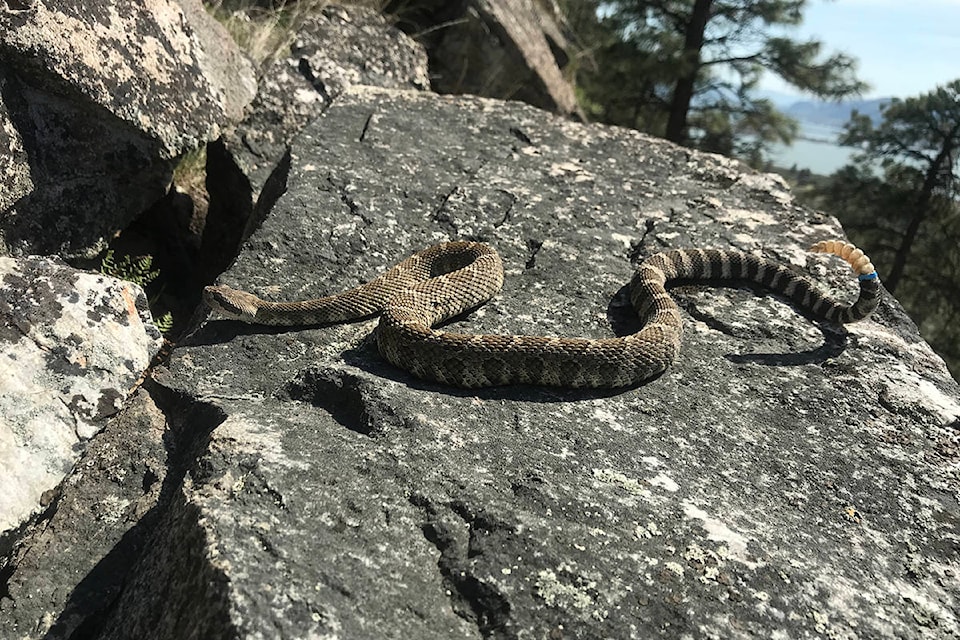It might be rattlesnake birthing season in the Okanagan, but that doesn’t make the snake species more dangerous — just a little more underfoot of humans.
This according to biologist and snake expert Dana Eye, of the Nk’Mip Cultural Centre, who said mid-August to mid-September rattlesnakes are giving birth and looking for food to prepare for hibernation. The snakes will be travelling to and from their dens, usually in higher elevations and on slopes.
READ MORE: ‘They are eating machines,’ says RDOS wildlife coordinator of bears in late summer and fall
A rattlesnake will only strike and bite if it is the last resort, she said, adding that “rattlesnakes are misunderstood” and are quite shy.
Those who encounter rattlesnakes, which are a threatened species, can determine if it is about strike if they coil up into an “S” shape. The reptiles can only strike about a third of their body length, so the best thing to do is to step away three to four feet and walk around them, she said.
Another way to avoid a dangerous encounter is to watch where you are walking. Such as, not hiking in long brush or shrub where you can’t see your feet and hands. If you do hike in high grass terrain, carry a stick to help see in front of you, according to Eye.
READ MORE: Hawk chick that was cared for in the Okanagan euthanized
“They like to use rockpiles and shrubs and go under logs,” she said. “Step on top of logs. Don’t straddle them because a snake could be under them.”
If bitten, it is important to get to a hospital right away.
“Don’t drive yourself because you never know how you are going to react,” Eye said. “You have about three or four hours to get to a hospital before serious damage happens but it is completely dependent on the person.”
Remove anything that restricts blood flow, she added.
“There is weird information out there about cutting the wound and sucking it out but that is wrong. It is best to let the venom go through the body as opposed to restricting to one area. Restricting it will actually increase the necrosis or degradation of the tissue.”
Circle the swelling with a pen and then write the time, she added. Doing that every 15 to 20 minutes will measure how fast the venom spreads in the body. This will help the doctor determine if someone requires anti-venom.
Juvenile rattlesnakes can be difficult to differentiate from other non-venomous juvenile snake species, such as the Great Basin gopher and Western yellow-bellied racer snake, Eye added. They don’t have a rattle until they shed their first skin.
READ MORE: ‘Irresponsible’ people keeping raptors as pets in Okanagan and Shuswap
“It’s best just to assume that they are rattlesnakes and don’t touch any of them. Don’t pick them up. People will pick up a young rattlesnake, and think that it is a gopher snake and it bits them.”
Eye studied the reproductive ecology of female rattlesnakes at the Nk’Mip Cultural Centre. She said more is known about males than females. But, she’s hoping to change that.
By tracking the females, Eye has discovered they return to the same birthing rookeries each time they breed.
“It may indicate the importance of these sites to protect them and understand more about them,” said Eye, who is currently also enrolled in a master’s program at Thompson Rivers University.
To report a typo, email: editor@pentictonwesternnews.com.
<>